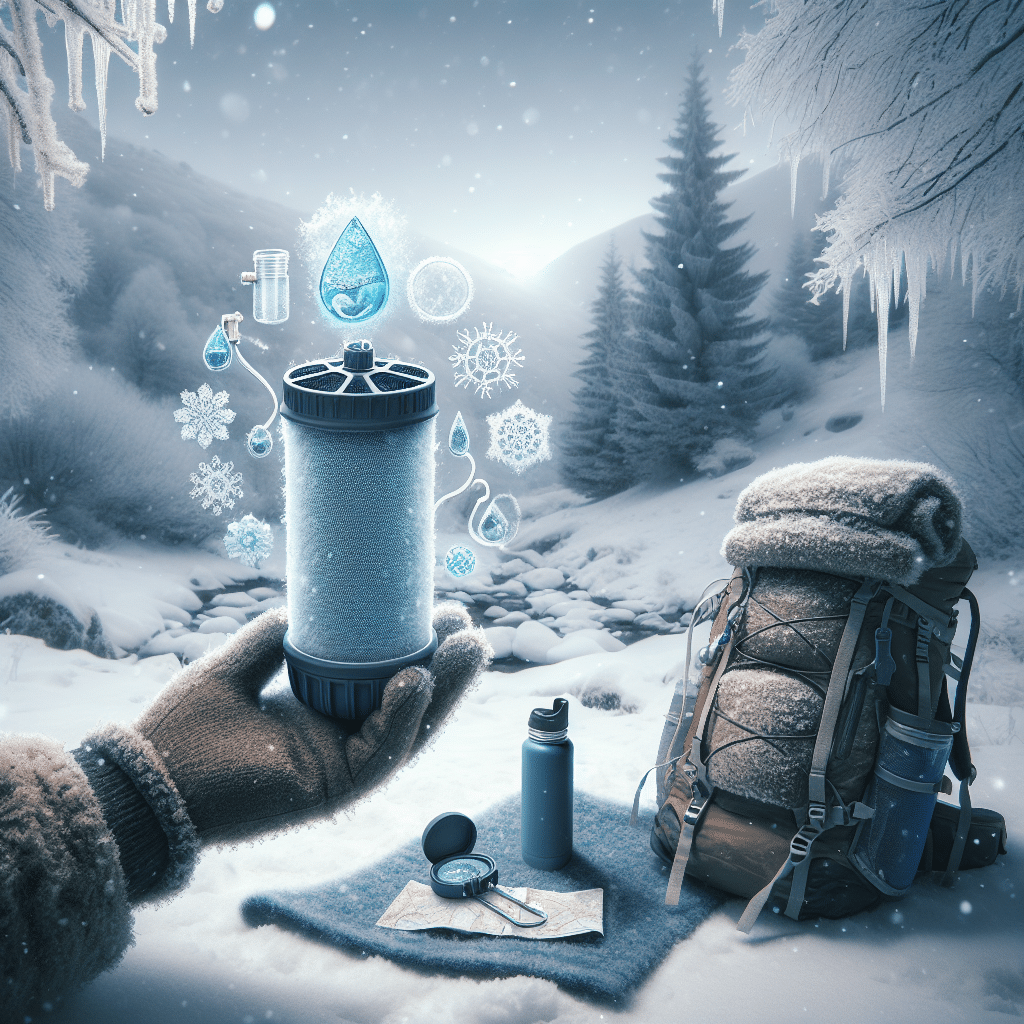Understanding Water Filters and Freezing Risks
Water filters play a crucial role for hikers who need clean drinking water from natural sources. However, during winter hikes, the risk of these filters freezing becomes a significant concern. When subjected to freezing temperatures, many filters can be damaged permanently, leading to malfunctions and contamination risks. Understanding how to protect your water filter from freezing is essential for any outdoor enthusiast.
Types of Water Filters
Before discussing protective measures, it’s essential to understand the various types of water filters. The most common types include:
-
Gravity Filters: These filter water from a higher reservoir through gravity, typically using a bag and a hose system.
-
Pump Filters: These require manual operation to push water through a filter element, often used during longer sessions where water sources are variable.
-
Straw Filters: Lightweight and portable, straw filters allow you to drink directly from a water source.
-
UV Filters: These use ultraviolet light to purify water, making them great for those who prioritize weight and simplicity.
-
Chemical Treatments: Not technically filters, these involve adding chemical tablets to purify water.
Risks of Freezing Water Filters
When water filters freeze, the liquid inside the filter can expand, causing the filtration element to crack or break. This not only terminates the filter’s effectiveness but can also lead to further complications such as bacterial contamination if the filter casing is compromised.
Key Preparation Steps
-
Select the Right Filter: Opt for filters designed to withstand low temperatures. Some models are known for their durability and are less prone to freezing conditions.
-
Pre-pack with Warm Water: Before heading out, fill your filter with warm water. This will help to delay the freezing process when you’re actually on the trail.
-
Check Manufacturer Guidelines: Always read the manufacturer’s instructions for specific temperature ranges and care tips tailored to your device.
-
Thorough Cleaning: Ensure your filter is clean and dry before your trip. Residual water can freeze and expand, leading to internal damage.
Insulation Techniques
-
Insulated Sleeves: Consider using insulated covers for your filter. These sleeves are designed to help retain warmth and prevent freezing in colder temperatures.
-
Backpack Positioning: Place your filter in a pocket closest to your body heat. Carrying it in an interior pocket of your backpack ensures it stays warm.
-
Thermal Wraps: Use a thermal wrap around your filter. Products designed to insulate water bottles can also be used creatively to keep your filter warm.
On-the-Trail Techniques
-
Frequent Use: Utilize your filter more often to keep it warm. The act of pumping or pouring water will help generate heat through friction.
-
Alternating Between Filters: If hiking with partners, consider alternating who carries the filter. This ensures it gets passed around and stays warm from body heat.
-
Avoid Long Stops: Minimize time spent at or near freezing water sources. The longer your filter sits in freezing air, the more prone it is to freezing.
Emergency Strategies
-
Preemptively Thawing: Should you suspect your filter has begun to freeze, gently thaw it using body heat. Keep it inside your jacket until you’re sure it’s safe to use again.
-
Alternative Water Sources: Be aware of warmer water sources, like springs or areas with less exposure to cold air, where the water is less likely to freeze.
-
Using Beyandleuchs: Consider using a chemical treatment as a backup. Having iodine tablets or another form of chemical purification can be a lifesaver if your filter becomes unusable.
Maintenance Tips Post-Winter
After a winter hiking season, inspect your filter for any signs of freezing damage. Look for cracks, leaks, or any loss of efficiency in water flow. Clean thoroughly to remove any contaminants that may have gathered and store in a temperate environment.
Conclusion
With the right preparation and techniques, you can successfully protect your water filter from freezing during winter hikes. Employing strategies such as insulation, proper storage, and on-the-trail adjustment will ensure you have access to clean, drinkable water even in the coldest conditions. As with all outdoor gear, understanding and applying these preventative measures will enhance your hiking experience and ensure your safety in the wilderness.
Further Reading and Resources
-
Hiking and Camping Blogs: Follow outdoor-related blogs that provide insights and personal experiences regarding gear usage in extreme conditions.
-
Manufacturer Websites: Check the official websites of your water filter brands for detailed specifications and recommendations.
-
Online Forums: Engage with outdoor communities on platforms like Reddit or specialized hiking forums for firsthand tips and updated gear recommendations.
-
Local Hiking Groups: Connect with local hikers for valuable tips based on your specific hiking geography and climate, enabling better preparation for winter treks.
By actively taking measures to guard your water filter from freezing, you can enhance your hiking experience in winter conditions and maintain your health and safety in the great outdoors.
